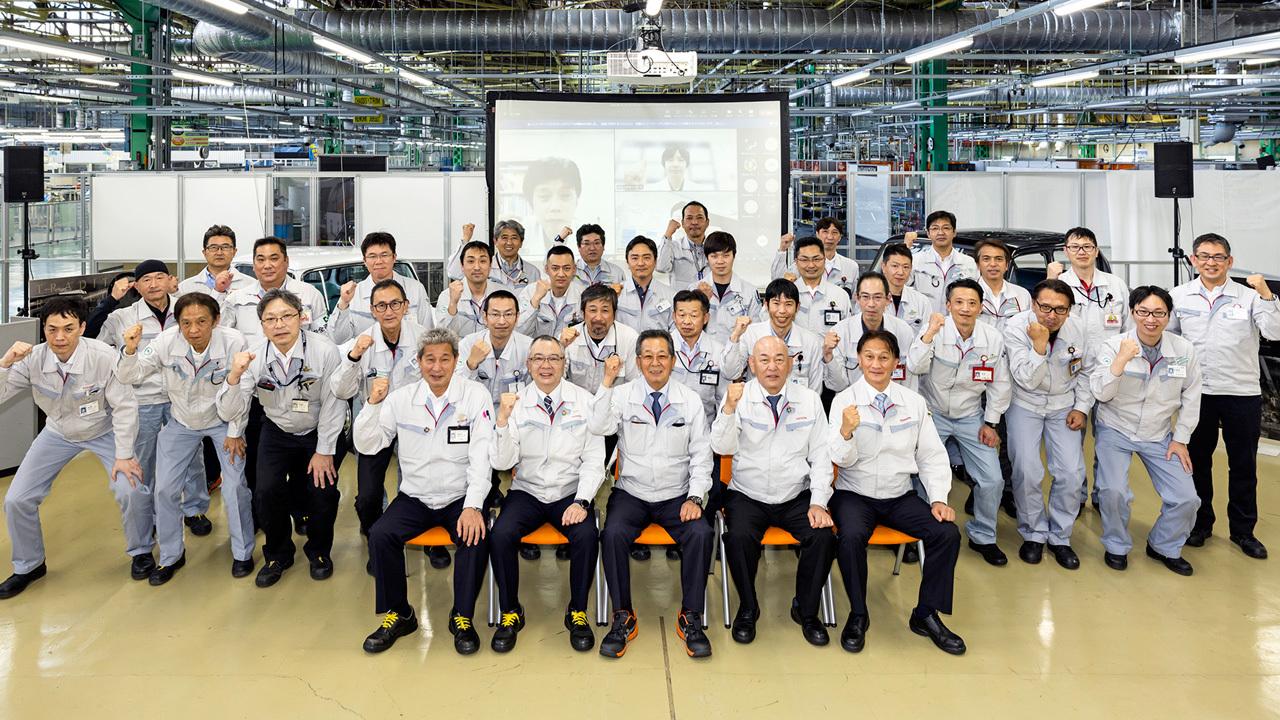
This series explores the project to restore a first-generation Crown, a car that embodies Toyota's origin. This article covers the project's kickoff event.

A project to restore this first-generation Crown started in the spring of 2022 at the Motomachi Plant, bringing together a diverse group of skilled members. This series closes in on the restoration efforts, starting with a report on the project’s kickoff event. Why does restoration of the 67-year-old model matter now?
New Crown to line up with past generations at the World Premiere
On July 15, 2022, President Akio Toyoda unveiled the latest 16th-generation Crown at a world premiere event. “Let me begin by telling you the Crown’s story, woven by successive chief engineers,” said Akio as he started his presentation.
The Crown’s story spans 66 years and 15 generations of continued evolution since 1955, with an underlying spirit of innovation and ambition. In his speech, Akio looked back at the history by focusing on the efforts and episodes of past chief engineers. Also at the event venue were examples of all past Crown models, from the first to the 15th generation.
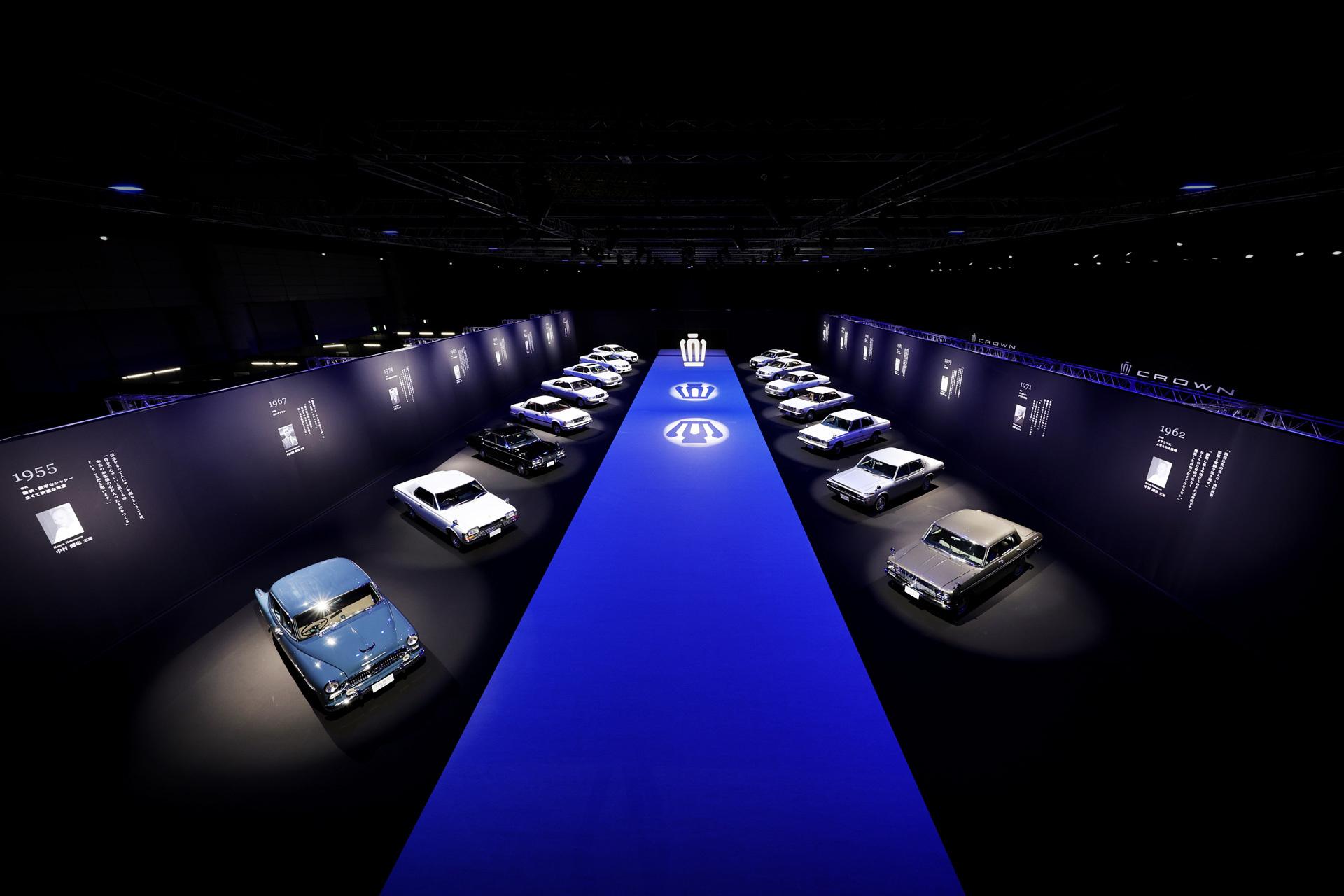
The Crown, named by the company founder Kiichiro Toyoda, was born out of his desire to enrich people’s lives by creating Japanese cars through the skills and ingenuity of the Japanese people.
Kenya Nakamura, the first-generation Crown’s chief engineer, was resolved to follow his vision regardless of opposition and criticism. He was not bound by preconceptions and brought together Japanese technologies to create a distinctive luxury car. The aim of this restoration project is to gain a deeper understanding of his efforts at the time.
Restoring the legendary first-generation Crown
The project’s kickoff event was held on April 25, 2022, at the Global Production Center (GPC) in Toyota’s Motomachi Plant. The venue was full of hushed excitement. On the event stage stood an immaculately restored Toyota Publica, a compact car from the 1960s, and the first-generation Crown awaiting restoration.
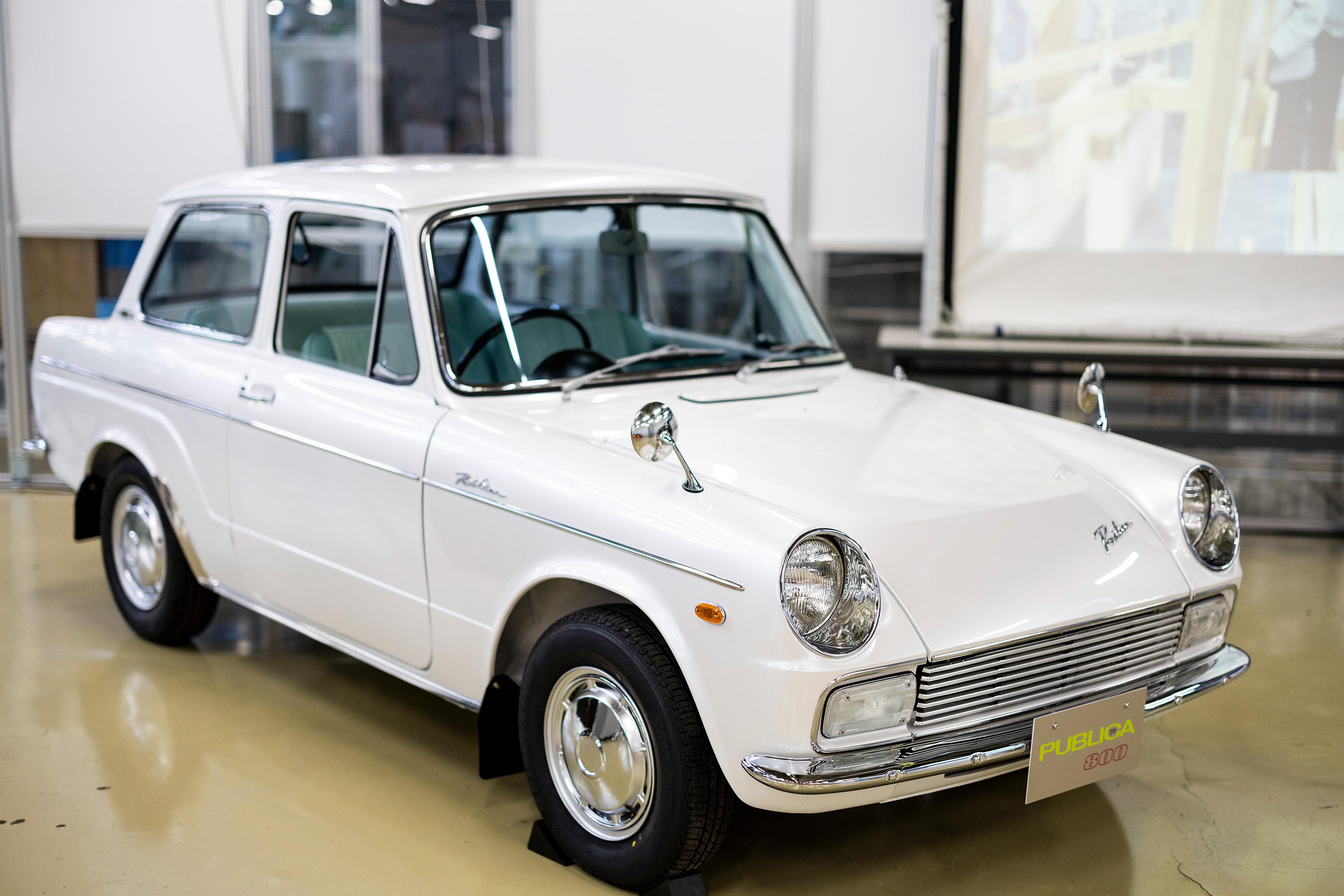
Attending the event were 56 project members—mostly experienced technicians from various departments—and management members, including Executive Fellow Mitsuru Kawai, Production Group Chief Officer Takahiro Imura, Kamigo and Shimoyama Plant General Manager Tomihisa Saito, Toyota Monozukuri Development Div. General Manager Toshiaki Fukatsu, and Vehicle Development Center Senior General Manager Masayoshi Sugawara.
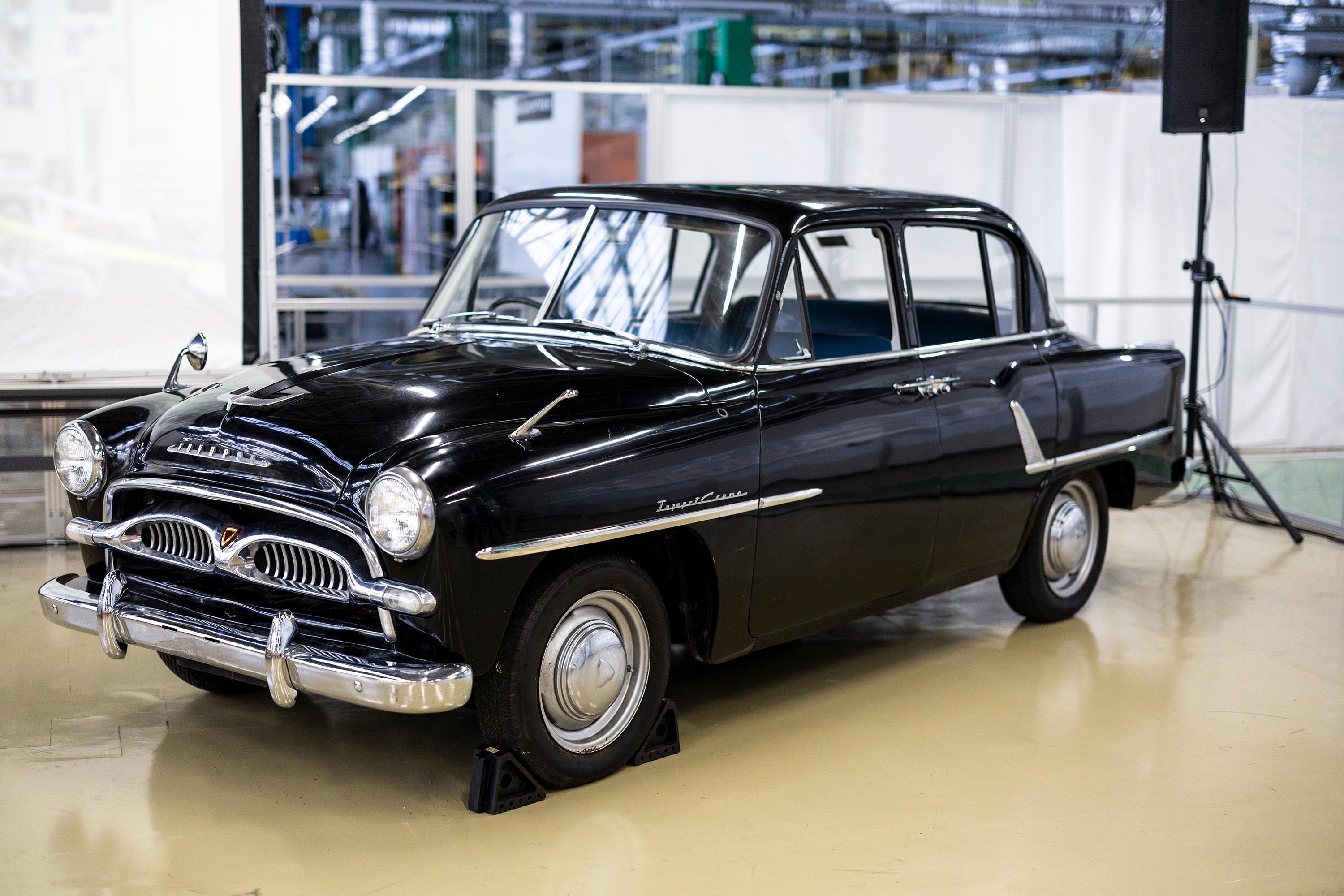
The mission of this project is to restore a first-generation Crown provided by its owner, who had cherished, driven, and carefully maintained it over many years. The team of highly skilled technicians from production and prototyping departments are tasked with the mission. This is uncharted territory for Toyota members, given the rarity of complete in-house restorations of a vehicle over six decades old. They must figure out how the years have affected the car and how to turn back the clock.
“Restoration takes us back to our origins amid a once-in-a-century upheaval”
To begin with, why is Toyota now embarking on this restoration? The most important goal for Toyota members is to understand the desire of some owners to continue driving a cherished car for so long, the concerns that stand in the way, and how they can use their skills to help make customers happy.
Another aspect is how to respond to major shifts in values around production and consumption.
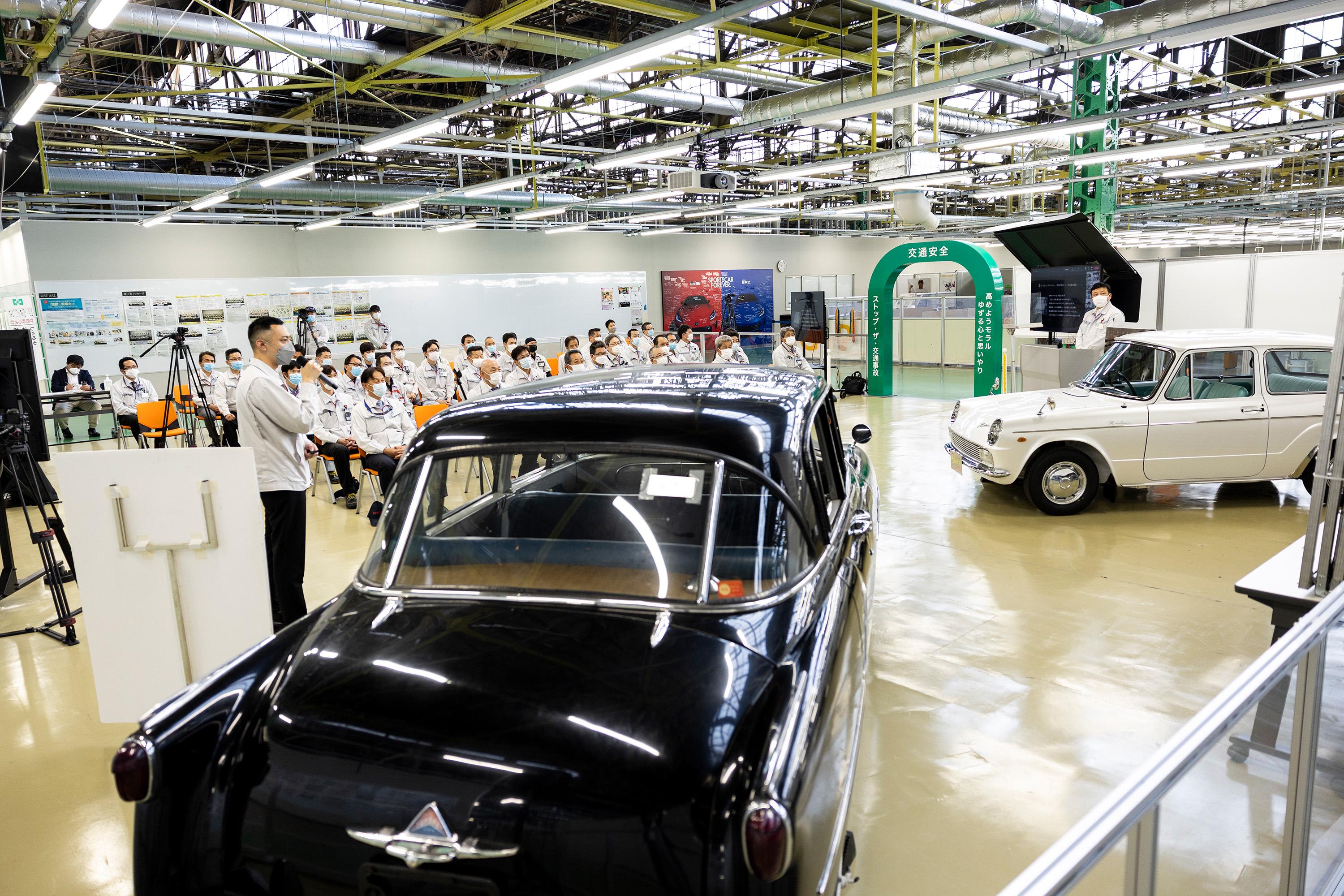
Many people now think that mass production and consumption societies pose the greatest threat to our planet’s future; they increasingly value sustainable lifestyles that prize enduring, high-quality goods. The same is true for cars—people are keen to continue driving their treasured vehicles, filled with memories, for as long as possible. Toyota’s technicians felt they should first return to their origins to rediscover the necessary knowledge and skills for responding to the changing times.
These issues pushed Toyota’s manufacturing members to propose the first-generation Crown restoration project.
“When I heard the suggestion, I thought it was a wonderful, interesting idea, says Executive Fellow Mitsuru Kawai, the project’s supporter and advisor. “We’re no longer in an era where we enjoy a high growth rate of new car sales with more and more vehicles on the roads. Selling cars to customers means being responsible for them until the end. We will have to cultivate the skills to serve those customers who wish to continue driving their cars for a long time.”
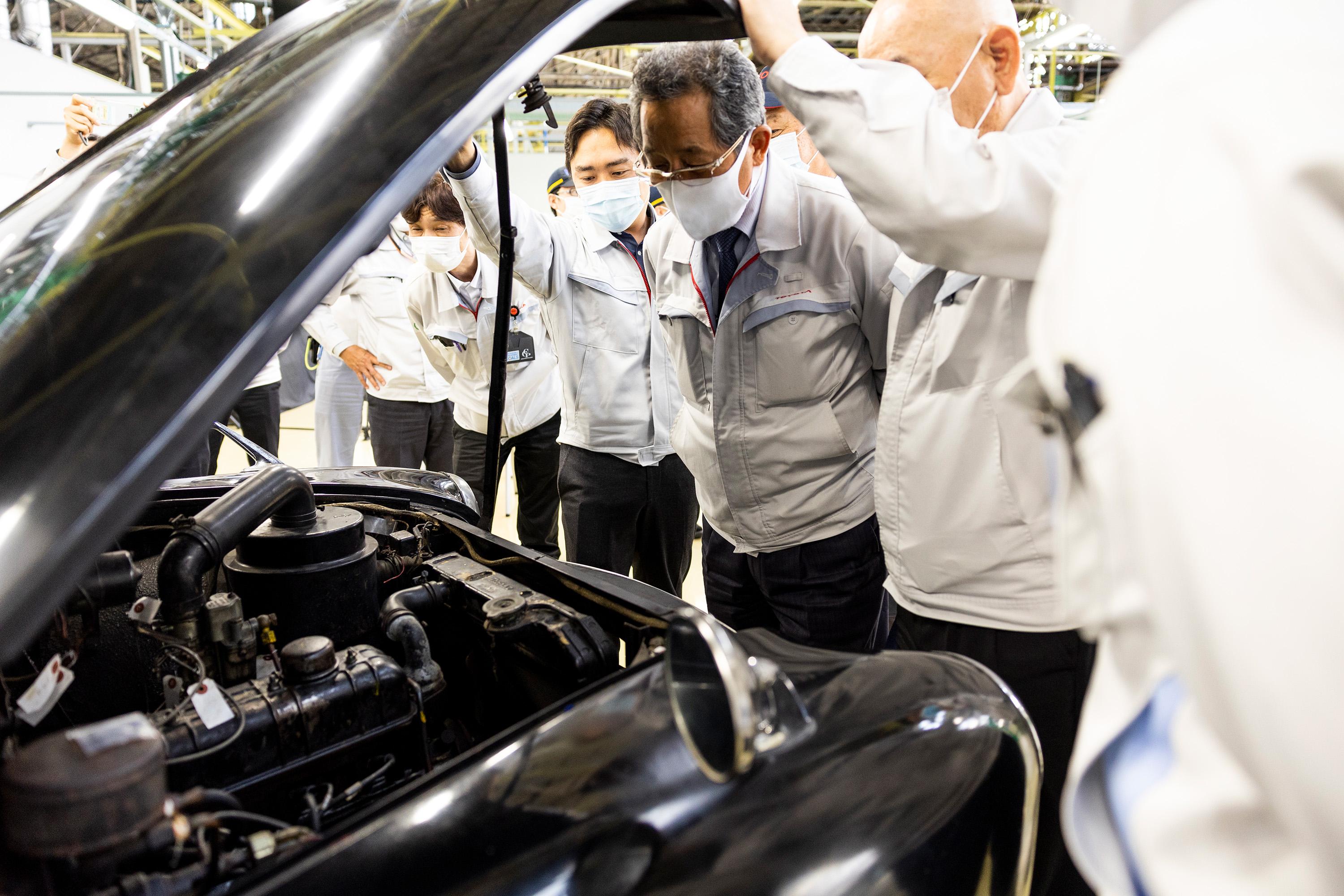
The once-in-a-century upheaval transforming the automotive industry is summed up in the acronym CASE, which stands for Connected, Autonomous/Automated, Shared, and Electrification. Carmakers are making efforts in CASE technologies to improve business sustainability and achieve the UN’s Sustainable Development Goals (SDGs).
Toyota is now transforming into a mobility company, a provider of extensive mobility-related services that meet the diverse needs of people and societies. An essential part of this transformation is a company-wide commitment to improving sustainability. The restoration project is also part of these steps.

Bringing Toyota’s skills and DNA into the future
This restoration project also has another key aim: to harness and cultivate the company’s talent through creating a new style of genba where work happens.
It becomes more difficult for senior technicians to work on the production lines as they get older. Furthermore, the increasing use of automation and digitization in car manufacturing may result in less need for manual skills. Those who have long sustained the manufacturing front lines would have few opportunities to use their outstanding capabilities.
In his address at the event, Toyota Monozukuri Development Div. General Manager Toshiaki Fukatsu shared the following words.
Fukatsu
This restoration project will help create opportunities to make full use of your outstanding skills and discover new ones as well. Moreover, it will be a valuable chance to hone those skills and pass them on to future generations. The teamwork with colleagues from various workplaces will undoubtedly strengthen Toyota’s manufacturing in the future.

Restoration work is also a kind of era-spanning dialogue between creators. Team members can learn about the car-making techniques, skills, visions, and ideas possessed by predecessors by engaging in the restoration. In other words, it leads to developing and passing on Toyota’s DNA to future generations.
Fukatsu
Restoration will require you to revive past techniques and skills, and to gain new expertise not currently found at Toyota. I’m sure this will prove a great challenge for younger members eager to learn new skills and for the top-class technicians to hone your skills further. Restoring a vehicle from the past is linked to creating our future.
Restoration is basically about returning a car to its original condition at the time of production. In mastering such skills, the team may be able to push the limits by introducing new technologies, such as converting the car to a battery electric vehicle.
In short, this restoration project is an initiative for Toyota and its technicians to return to the starting point of car-making and carry their newly acquired skills into the future.
With determination for the future
Following Fukatsu’s speech, the kickoff event introduced the project overview as well as the Publica Restoration Project, which served as a test run for this endeavor. Three project leaders then expressed their determination for this endeavor.

Okamoto
This project was my first chance to hear feedback from long-time Toyota owners, and I was moved by their passion for their beloved cars. In doing the restoration work, I will always keep in mind the perspective of customers who treasure their own Toyota.
Shudo
I was worried because I had no experience in restoration work. But seeing the car on display at the Toyota Automobile Museum made me keen to use our skills to do even better. As the car’s manufacturer, we aim to do more than simply return the car to good-as-new condition by adding value.
Nishida
I pride myself on being a professional at assembling new cars, but I’m completely inexperienced when it comes to old cars, and dismantling these brings one challenge after another. Together, we’ll work hard to assemble the refurbished parts into a Crown that’s better than new.
Kawai gave the final speech of the kickoff event.
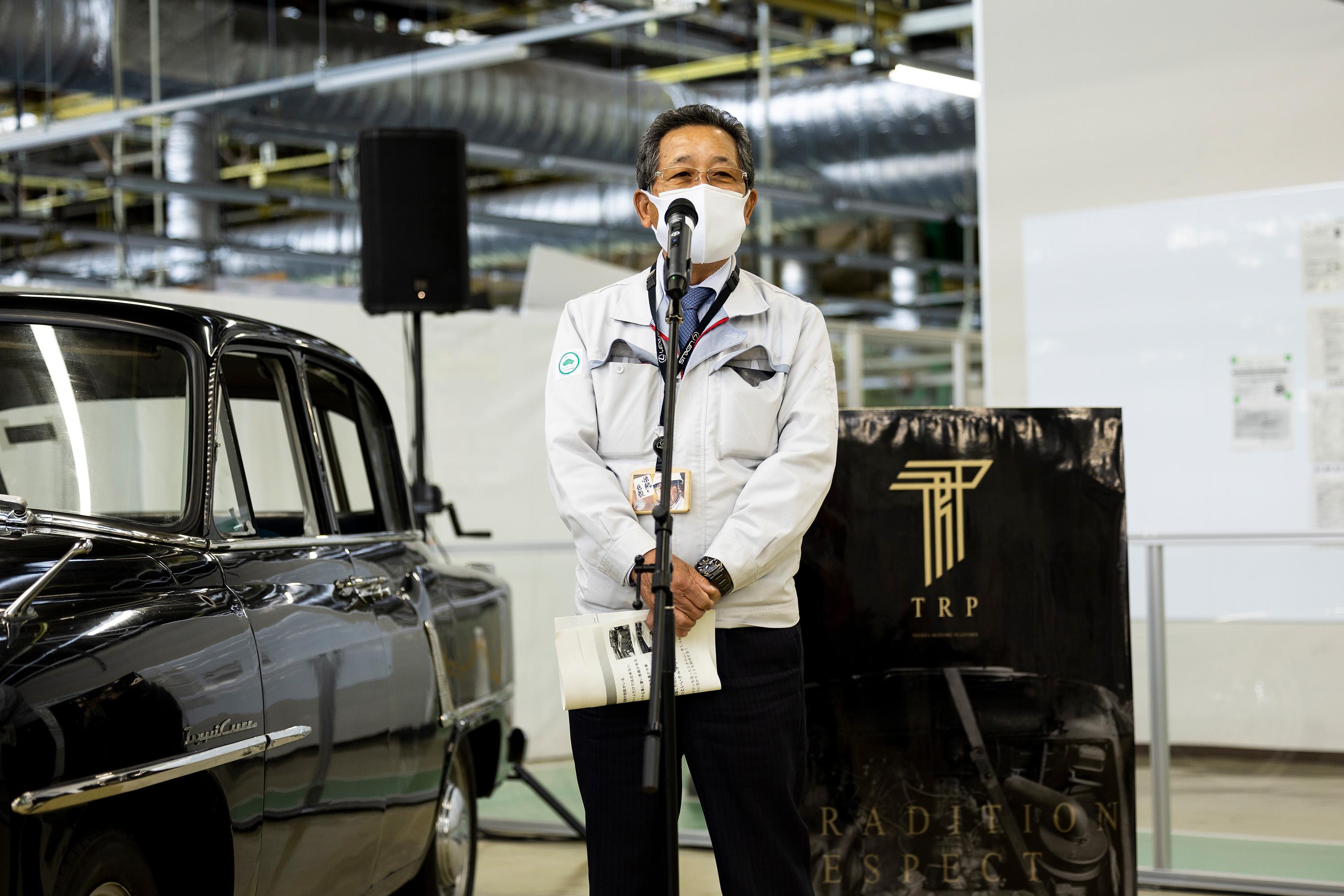
The Crown was born out of company founder Kiichiro Toyoda’s conviction to build a world-class car through Japanese skills and ingenuity. It embodies Toyota’s origin of car-making.
Restoring this Crown means reviving Kiichiro’s car-making spirit and vision. Through this project, I hope you will pass on our predecessors’ car manufacturing spirit and the company’s DNA to the younger generation.
I believe a car is filled with the love of those who make it. I want you all to become the ultimate team of technicians, capable of handling everything from car-making to restoration, to ensure our customers can cherish their beloved cars to the very end. I’m counting on you.
As Kawai says, the Crown was born out of Kiichiro’s ambition to create the best possible car by bringing together every latest technology at the time. That vision and the spirit of innovation and challenge have been passed down through the generations to the latest Crown, which comes in four entirely new variations.

Toyota Times will spotlight the Publica restoration project that served as a test run for this endeavor in the following article.
(Text: Yasuhito Shibuya, photo: Akira Maeda)

